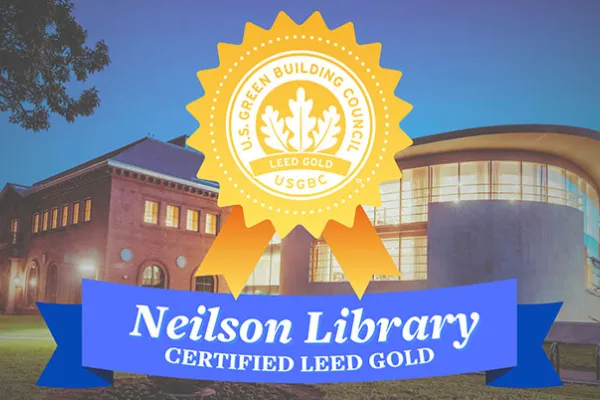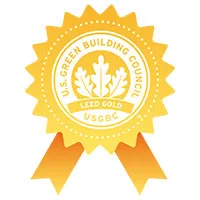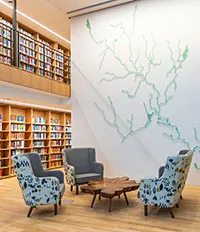Smith College Libraries Continue Sustainability Mission
New Neilson

Published April 21, 2023
From creating exceptional, healthy spaces for research and reflection, to minimizing net greenhouse gasses in the newly constructed Neilson Library, Smith College continues to lead an intentional and purposeful vision toward sustainability.
Lending millions of items over the decades promotes an inherent sustainability model, one that has heavily inspired the Libraries’ vision. Putting this model into practice is evident in both the physical spaces, as well as the meticulous planning and processes created by those invested in the Libraries’—and our planet’s—future.
Neilson Library LEED Gold Certified

In March 2022, Neilson Library was awarded the U.S. Green Building Council’s Leadership in Energy and Environmental Design (LEED) Gold certification in Building Design and Construction for New Construction and Major Renovations. From the start, Smith wanted the new Neilson Library to be an exceptionally sustainable and environmentally sensitive building. A Sustainability Charter was developed to guide the work, tracking the sustainability goals and referencing requirements throughout the construction.
LEED certification uses a complex system of metrics with 110 benchmarks in nine categories before determining the final rating: sustainability, innovation, materials and resources, indoor environmental quality, water efficiency, energy and atmosphere, regional priority credits and integrative processes.
Materials Reuse

Rather than construct an entirely new building, the college incorporated Neilson’s core exterior shell and segments of original foundation and retaining walls during construction, and also saved interior building elements and furniture for use in the redesigned facility.
A large elm tree from the Neilson grounds has also been repurposed. The tree, which became unstable during construction, has now been transformed into live-edge furniture for the new Neilson Library by woodworker Sam French.
The Path to Carbon Neutrality

Smith joined the Climate Leadership Network in 2007 by signing the Carbon Commitment. In doing so, Smith pledged to create a climate action plan that included “a target date for achieving carbon neutrality as soon as possible.”
The energy efficiency of the new Neilson Library is one of the elements that will help Smith meet its carbon neutrality goal, as the library aims to be the most energy-efficient library with archival storage in North America.
Learn more
Discover all the ways in which Smith College Libraries have committed to sustainability here: Neilson Library Sustainability Features.